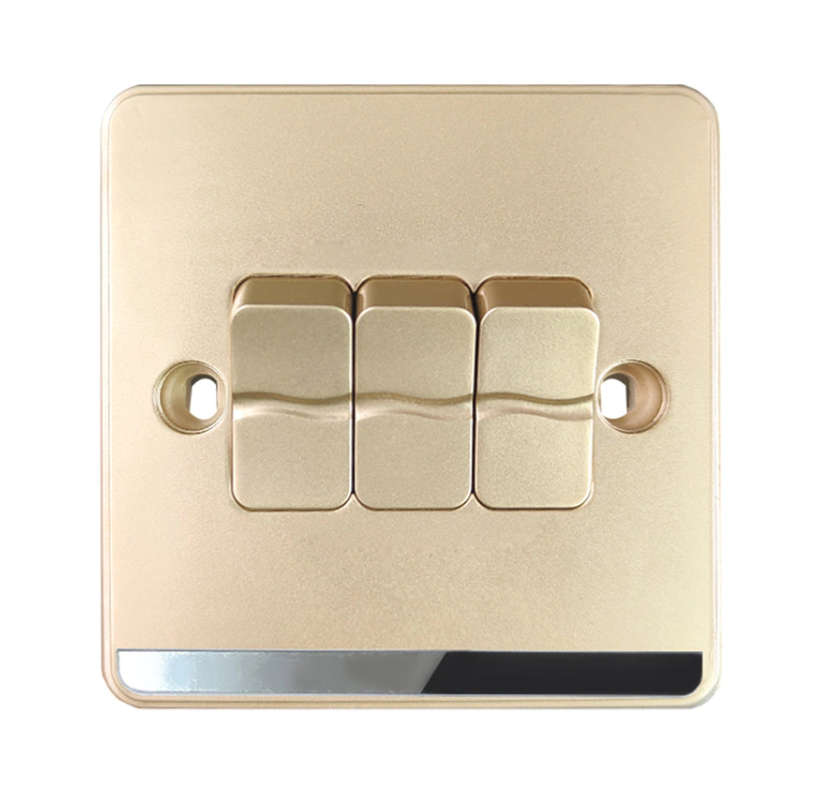The electrical wall switch has become a quietly pivotal element of modern interior design. When one flips a switch on the wall, a circuit is closed or opened, enabling lighting, a fan, or other devices to function. The wiring behind the panel may seem hidden, but the switch and its accompanying wall plate are very visible, and they affect both usability and aesthetic.
When choosing an electrical wall switch, it is important to consider the number of gangs (i.e., the number of switch modules grouped together), the type of socket or outlet nearby, and the finish of the switch panel. For example, a one-gang one-way switch may control a single ceiling light, whereas a two-gang two‐way setup might allow control from two locations. In many modern homes the switch and socket are combined or located adjacently to improve convenience. Some wall switches incorporate neon indicators or LED lights, which help identify their status in low lighting.
Installation of a wall switch involves careful wiring: live, neutral and the earth conductor must be correctly connected to the switch and socket system. Errors in wiring can lead to malfunctions or even safety hazards. Therefore it’s critical that the switch module is installed within a properly grounded socket box, with tight screws and clear labeling of terminal blocks. Many manufacturers now offer ultra-thin switch panels which sit nearly flush with the wall surface and reduce shadow lines, blending with contemporary décor. These panels may be made of PC (polycarbonate), bakelite, or glass-front designs, offering varied textures and finishes.
Another factor is the rated current and voltage of the switch. For example, a typical switch might be rated at 10 A or 16 A at 220 V-250 V for general lighting circuits. In rooms that require heavier loads—such as air-conditioning, heaters or certain appliances—the wall switch selected must match the load to ensure safe, reliable operation. The material of the switch and socket housing must meet flame-retardant standards and carry relevant certifications. Quality inspection stages such as incoming materials checks, process inspection and final product tests all contribute to the switch’s performance and durability.
From a design perspective, the wall switch is no longer just a functional component; it has become a decorative feature. Homeowners often choose panels in matte wood finish, golden brushed metal, or black brushed panel to integrate seamlessly with interior décor. Matching the switch plate finish with door hardware, lighting fixtures and furniture can help unify the design language throughout a room or entire floor. The tactile feel of the switch—how it clicks, how smooth the rocker movement is—also matters for user experience.
In summary, the electrical wall switch is more than just a toggle; it’s a key link between human interaction and the electrical system in a building. Thoughtful selection and correct installation ensure that the switch not only works reliably but also enhances the user experience and room ambience. When properly integrated, the wall switch serves as a small but significant part of a smarter, well-designed space.

